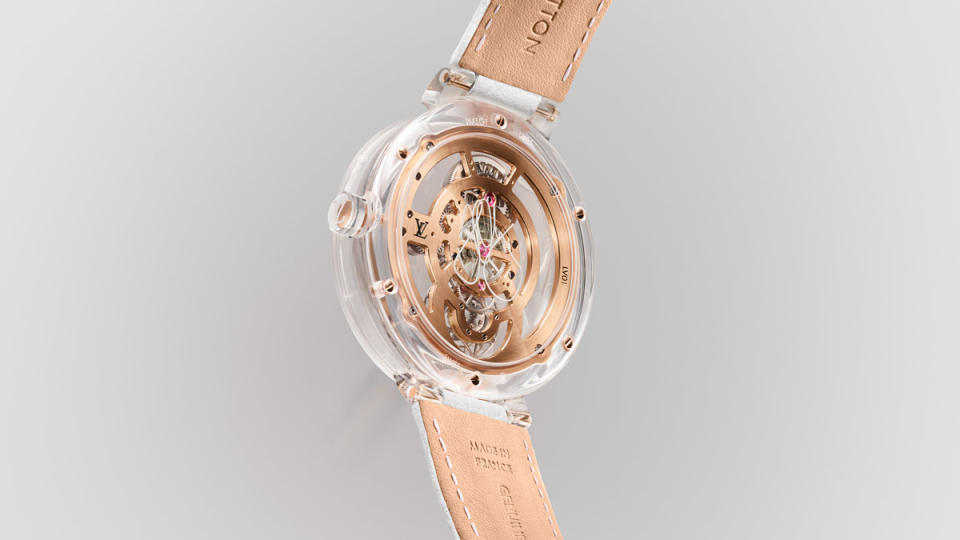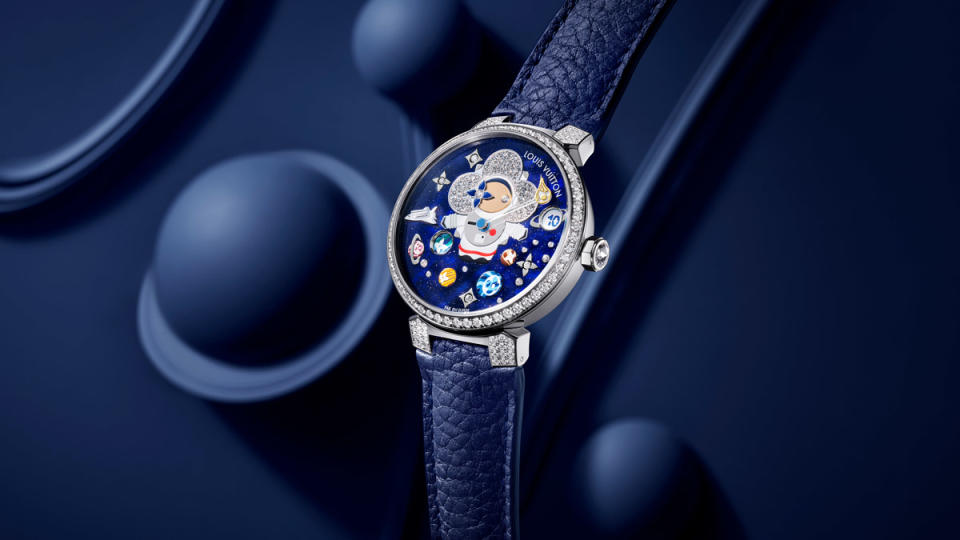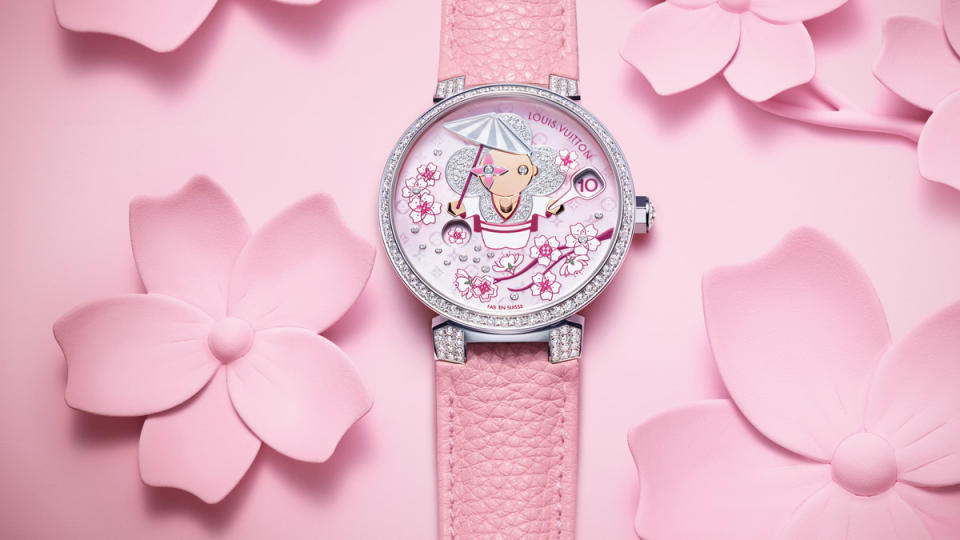Louis Vuitton Enlists Frank Gehry and Its Mascot for Its Creative New Watches

- Oops!Something went wrong.Please try again later.
Being a relatively young watch brand compared to the hundred-year-old heritage brands, Louis Vuitton has been free to adopt a modern aesthetic rather than reissuing archival designs. Four new pieces in the Tambour and Voyager collections reflect the creativity that is possible when a brand operates outside the constraints of traditional design.

It was only a matter of time before Louis Vuitton and architect Frank Gehry teamed up on a timepiece. The watch division’s three-dimensional, unconventional approach to traditional watchmaking is akin to Gehry’s out-sized, often outrageously shaped post-modern architecture. Gehry designed the brand’s sprawling glass-panelled Fondation Louis Vuitton building on the outskirts of Paris, which served as the inspiration behind the new Tambour Moon Flying Tourbillon Sapphire Frank Gehry. The concrete and glass structure was designed to resemble a ship, with 12 glass sails and, in a similar glass-panel construct, the watch’s case, dial, lugs and hands are made of a single 200-kilo block of sapphire. The transparency makes it possible to view of the flying tourbillon movement and the skeletonized rose gold plate from every angle.
More from Robb Report
Bulgari's Latest Octo Finissimo Watches Have Sketches of Movements Right on the Dial
3 Things to Consider Before You Buy Your Next Watch, According to a Veteran Dealer
How Louis Vuitton Created 3-D Fish, Dragons, and Snakes for Its Latest Watches

For the dial design, Gehry drew inspiration from his design of the Louis Vuitton Maison Seoul in Seoul, Korea, which includes a rippling glass structure that appears to float weightlessly over the roof of the building. He also wanted to mimic the boat sails of the Fondation building, an ambition that required 250 hours of hand workmanship just to sculpt the sapphire into the desired shapes and reliefs. The dial makers used medical tools to create some of the curved shapes, and some areas of the sapphire were given a matt finish to create the sail effect. A clever detail: the sapphire hands have luminescent edges to make them more visible. The flying tourbillon caliber LFT MM05.01 was produced and assembled at La Fabrique du Temps in Geneva, and the watch was made to Poinçon de Genève standards.

The Tambour Slim Vivienne Jumping Hours Sakura and Astronaut place Louis Vuitton’s icon-branded mascot, Vivienne, in two new settings: space and among Japan’s blossoming cherry trees. The movement is unique in that the jumping hour alternates between two apertures instead of one. On the Sakura model, Vivienne is dressed in a kimono and holds a fan that serves as one of the windows for the jump hour. The minutes are indicated by a transparent hand tipped with a cherry blossom that seems to float around the dial. Hand-painted cherry blossoms appear against a backdrop of pink mother-of-pearl to which the brand’s floral monogram is applied using a holomonogram technique that involves sand-polishing. On the Astronaut model, the hours jump from one planet/aperture to the other, and the minutes are indicated by a comet orbiting the dial. The background is a mashup of mother-of-pearl and aventurine. The rotors on both watches are engraved with the Vuitton floral monogram.

Vivienne also appears in the brand’s jewelry, ready-to-wear and leather goods collections. She has previously appeared as a fortune teller, a croupier, and a juggler in three different Tambour Slim Jumping Hour watches. Prices for both Vivienne models are, of course, upon request.
Both the Frank Gehry and Vivienne models are clearly for very different tastes, but both show how the extent to which house is spreading its design wings in its watchmaking.
Best of Robb Report
Sign up for Robb Report's Newsletter. For the latest news, follow us on Facebook, Twitter, and Instagram.

